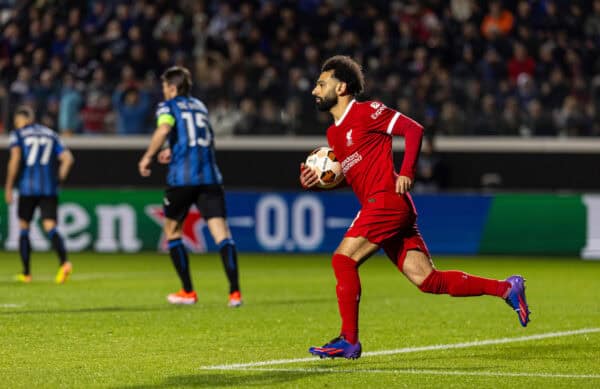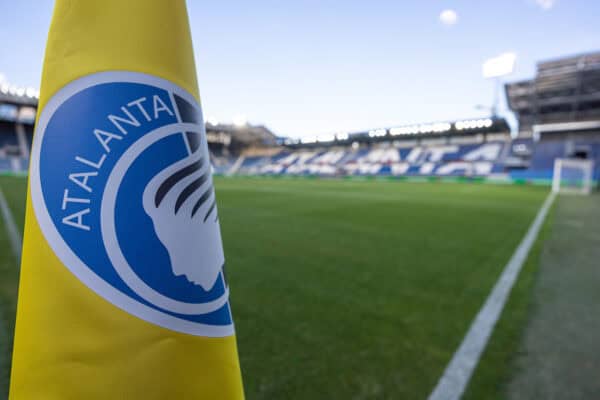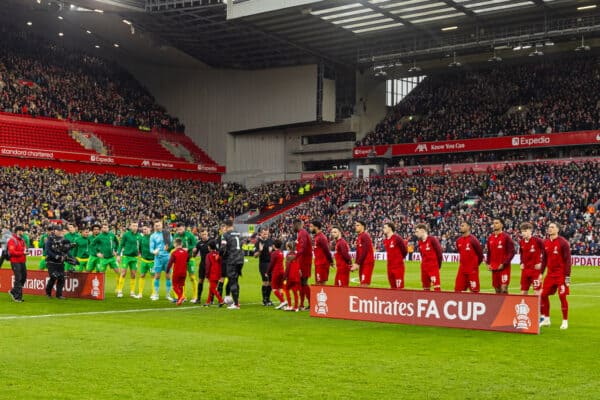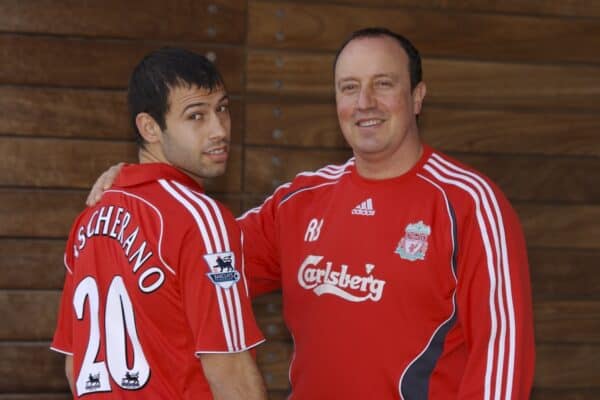All On Red: 10 Years at Anfield. A Liverpool Fan’s Dream Job

Frank Gamble (2011)
Frank Gamble came from a family of Evertonians – but as is often the way in Liverpool, he found his way to Anfield as a boy and fell in love with the Reds. Like most fans, he followed the team when he could, until in 1979 he was appointed as the club’s Lottery Sales Manager. He stayed for 10 years as Liverpool dominated English football. All on Red is the story of the glory years of Liverpool Football Club as told by an insider. It is a story of triumph and tragedy, showing the human side of the men who became Anfield legends.
ON a recent trip to Anfield, I admittedly spent a fair bit of time in the shop looking at the various products that were on offer to the discerning Liverpool FC shopper. I’m sure that you could kit your entire house with LFC gifts from wallpaper, alarm clocks, bed spreads, rugs, pillow cases, a range of different cups whether plastic or china, towels, pens or pencils. You could probably eat Liverpool FC, in sweet form anyway.
The big beat music churned out of the PA system, as I was surrounded in the famous poppy red in many forms. There were rows and rows of Liverpool football shirts whether 1st, 2nd, or the apologetic 3rd strip. I began to realise that outside of the gym, I was about twenty five years too old to think that I could walk around the streets of Merseyside, or further afield, in full Liverpool home kit. The shops are a key income source for Liverpool FC, like they are for virtually all clubs. Rows of helpful teenagers stood at the long tills, with wistful faces, clad in the latest Liverpool kit, with the hope that you will deposit a full basket of the latest Liverpool produce, as if you were in a large supermarket with some fruit and veg. You feel a bit guilty, if you come out of the chop without even a postcard.
It was not always thus and this book talks about a different age for Liverpool which was only around thirty years ago. For people of a younger age, who have grown up with nothing else, other than Super Sundays, Grand Slam Saturdays, 24/7 football, 6 point relegation battles in September, and managerial sackings like leaves falling from autumn trees, this book must be a revelation. I grew up at the start of this bubble expanding, but it was a bit of a culture shock to read this book about the days of Development Associations and lottery ticket sellers trying to bring the crucial income into the club.
In the pre- National Lottery days, I guess that getting a ‘golden gamble’ ticket was a bit of a lottery novelty. In 2011, you will go to most football grounds and the half time lottery draws still take place, but you are also encouraged to buy a monthly shop of branded goods from the club shop, buy a match day magazine, have your breakfast, midday and evening meals from the café bars, and be encouraged to purchase full financial packages including credit cards. I was reading about a man who was travelling to corner shops across the Merseyside area to ensure that enough club lottery tickets were sold with the morning newspapers and the pints of milk.
However, this is not an Open All Hours trawl through early eighties Merseyside, with constant references to how today’s football has gone to the dogs. Many of you know about life in Liverpool at the turn of the eighties. To the background of dramatic unemployment, the Toxteth riots of 1981, and the feeling that everyone across the UK and the world was against anything, and anyone to do with Liverpool, you will be reading about a Liverpool fan who found his dream job inside the gates of Shankly. He knows that he is lucky.
The accidental trip into the Boot Room during a post-match deliberation is particularly fun to read. This book is not just a set of pages of someone gloating about his luck. On a certain level, you start to wonder whether this is another case of never mixing work and play.
Like anyone who thinks that he has finally landed a dream job, there are tales of various backroom rows along the corridors of the stadium. It slightly disputes the image that anyone at any football club is entirely united around the idea of three points come 4:55pm on a Saturday afternoon. That fact is highlighted heavily in the promo literature. What I found more interesting was the tales of the big games during the period.
The 1984 European Cup Final was of particular interest. It is obvious that Gamble has particular admiration for Graham Souness, although he recognises that Souness’ managerial record, and the Sun newspaper episode in 1982, severely dented the former Liverpool captain’s reputation. How a Cup Final could be played in the ground of one of the competitors remains beyond me, even twenty seven weeks later. You do feel like you were in the stadium, and like Gamble, you are really unsure and unnerved by the stadium atmosphere, and you are especially unsure when Alan Kennedy steps up to score what will be the winning goal.
The mood dramatically changes when this book offers an extremely vivid account about Heysel on the 29th May 1985. It is not an easy read. Heysel accounts are never an easy read, although it is a very measured account in this book, about these dreadful events. The sound of the infamous wall cracking under the pressure of escaping fans was so vivid that I had to take a couple of minutes to reflect on what I had just read. Like many accounts, Heysel is described as a crumbling stadium that was totally unsuitable as a venue to stage a European Cup Final. Until reading this book, I did not entirely realise how the events of that Wednesday evening in 1985 drained the soul of the Club. It is remarkable that rookie manager Dalglish managed to achieve what he did in that 85-86 season.
It is not the first time that I have read a book that suggests that Liverpool Football Club did not quite jump on the commercial bandwagon in the early eighties, but this account does provide some fun reminiscence of some dramatic years in Liverpool FC’s history. The strongest part of this book is the football matches, from a staff member’s perspective, with a vividness that a cold history book would struggle to achieve.
















Fan Comments